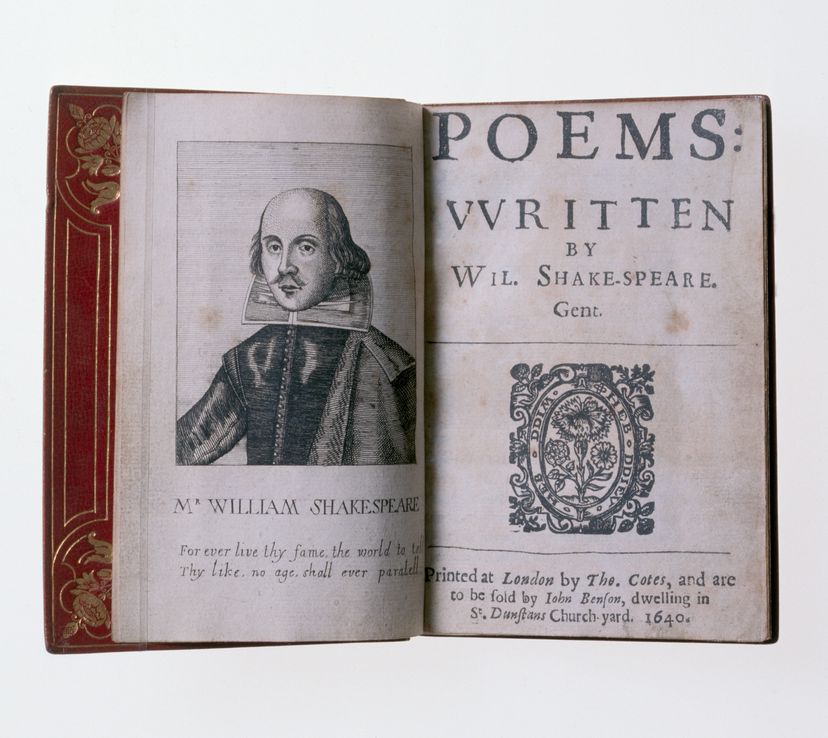
About This Quiz
Poetry may seem simple, but if you take a closer look, you'll see the attention to form, detail, meter and rhyme that make classic poems so unforgettable. Take our quiz to see how much you know about the art and practice of poetry.Shakespeare wrote more than 150 sonnets between 1593 and 1601, then published the collection as a group in 1609.
A sonnet consists of 14 lines, and the rhyming scheme can vary. Sonnets with those 14 lines grouped as four, four, four and two are known as Shakespearean sonnets.
The first letter in each line of an acrostic spells a word or phrase. Lewis Carroll's "A Boat Beneath a Sunny Sky" is an example of this.
Advertisement
Didactic poetry is known for its strong lesson or moral. John Milton's "Paradise Lost" is one famous example.
Ancient poet Virgil was famous for his Georgic works, which were often instructional and covered agriculture and other rural topics.
A haiku consists of three lines, with five syllables in the first and third lines and seven syllables in the second line.
Advertisement
Landays are a form of folk poetry native to Afghanistan. They consist of a simple couplet with a total of 22 syllables.
A limerick consists of five lines with an AABBA rhyming scheme.
A quatrain consists of four lines, though the rhyming pattern and meter can vary between works.
Advertisement
A tanka is a Japanese poem similar to the haiku that has five lines with five syllables in the first and third lines and seven syllables in each of the remaining lines.
Common measure incorporates the traditional ABAB rhyming pattern. This measure can be found in many poems by Emily Dickinson and in Rudyard Kipling's "The Benefactors."
With more than 1.8 million words, India epic "The Mahabharata" is the world's longest poem.
Advertisement
The epic poem about a Sumerian king dates back to around 2100 B.C.E. It was compiled onto cuneiform tablets around the 12th century B.C.E., making it one of the oldest known poems.
A Sumerian love poem, romantically titled "Istanbul No. 2461," dates back to around 2030 B.C.E.
Believe it or not, it wasn't until 1993 that songwriter Dave Kapell came up with the idea for magnetic poetry.
Advertisement
Since 1996, the Academy of American Poets has designated April as National Poetry Month.
Starting in 1937, the U.S. entrusted its poetic interests to a consultant of poetry, which evolved into the title of poet laureate in 1985.
Sorry Mr. President - the appointment of the poet laureate is left up to the Librarian of Congress.
Advertisement
Poet laureates earn a stipend of $35,000 per year thanks to an endowment established by Archer Milton Huntington.
Ginsberg, Gregory Corso and other Beat poets were known for their free verse, jazz-influenced style.
Dada poetry was a precursor to surrealism that originated in Switzerland in 1916. Both T.S. Eliot and Ezra Pound are associated with this style.
Advertisement
Flarf started as an internet joke in the '90s but is now considered a legitimate poetic form in which writers are inspired by bizarre online searches.
The iamb meter is the most common rhythm used in poetry. It consists of unaccented syllables followed directly by accented ones.
In poetry, a foot consists of two syllables, generally including one accented syllable and one unaccented.
Advertisement
A pentameter consists of five feet, for a total of ten syllables. It is among the most common metrical lines in English poetry.
Poulter's measure consists of two rhyming lines with a total of 26 syllables - the first with 12 syllables and the second with 14.
A foot in which both syllables are accented is a spondee. "Hog wild" is one common example of this.
Advertisement
Pyrrhic meter was common in classic Greek poetry and consists of a foot in which both syllables are unaccented.
An aubade is a poem dedicated to or lamenting the dawn.
Ballad-style poems follow this form. Edgar Allen Poe's "Annabel Lee" is a popular example of a ballad.
Advertisement